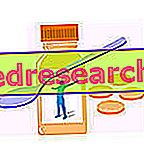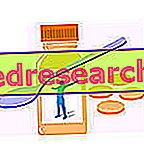Drinking milk is "the product obtained from the regular, uninterrupted and complete milking of animals in good health and nutrition"; moreover, if it is not otherwise specified (on the label), from the legislative and product point of view, "milk" means exclusively that of the female of bovine, better known as cow or cow (RD 9/5/29 n. 994 and relative changes).
Milk abuse
The milk has a liquid consistency, therefore it is not strange that it is also used as a drink;

Despite being an excellent nutritional source of calcium, phosphorus, high biological value proteins and riboflavin (vit. B2), milk should be consumed in a more scrupulous way than just mentioned; an excess of its use could affect not only the caloric balance making it positive (therefore fattening), but also on the overall contribution of daily cholesterol (which should not exceed 300mg) and on the balance of fatty acids (with a percentage increase of saturated ones ).
In this regard, the food industry makes available various types of cow's milk that stand out from one another for their different content in triglycerides and cholesterol; they are respectively whole milk, semi-skimmed milk and skimmed milk (recently the most fatty form of "raw" milk was reintroduced, but due to its perishable nature, its spread has not yet reached the levels of traditional products ").
Milk skimming
Milk skimming is a PHYSICAL (and not a chemical) procedure, useful for the separation of the fat component from the hydrophilic one, which does NOT alter the structure of the lipid globules. The milk has a very complex structure; it is a suspension, an emulsion, a solution, a dispersion and a colloidal solution. It contains many nutrients that, interacting with each other and in the presence of water, maintain the balance to favor the liquid consistency. To extract the lipid component from whole milk, the industry uses a technique called centrifugation ; this industrial process uses machines that take advantage of the "centrifugal force" up to a maximum of 6500-7000 rpm, at which time the water and the hydrophilic solutes are separated from the fat and from the lipophilic components. Through centrifugation, semi-skimmed milk (1.5-1.8 g / l of lipids) and skimmed milk (0.3% of lipids) are obtained.
Nutritional content of cow's milk: whole, partially skimmed and skimmed
Obviously, the nutritional intake and especially the caloric intake vary considerably based on skimming.
| Macronutrients in 100ml cow's milk | full | Semi-skimmed | skim | |
| Power | (Kcal) | 64.0 | 40.0 | 34.0 |
| proteins | (G) | 3:30 | 3:31 | 3:37 |
| Lipids | (G) | 3.60 | 0.88 | 0.80 |
| Saturated | (G) | 2:11 | 00:55 | 00:05 |
| Monounsaturated | (G) | 1:10 | 00:25 | 00:02 |
| polyunsaturated | (G) | 00:12 | 00:03 | 00:03 |
| B.C. Linoleic | (G) | 00:07 | 00:02 | 00:00 |
| B.C. linolenic | (G) | 00:05 | 00:01 | 00:00 |
| Cholesterol | (Mg) | 11 | 4.0 | 3.0 |
| carbohydrates | (G) | 4.90 | 4.79 | 4.96 |
| Simple | (G) | 4.90 | 4.79 | 4.96 |
| Sodium | (Mg) | 50 | 105 | 42 |
| Potassium | (Mg) | 150 | 152 | 156 |
| Football | (Mg) | 119 | 116 | 122 |
| Phosphorus | (Mg) | 93 | 89 | 101 |
| Riboflavin | (Mg) | 00:17 | 00:15 | 00:18 |
| Niacin | (Mg) | 00:09 | 00:06 | 00:06 |
| Retinol | (Mcg) | 37.0 | 13.0 | 1.0 |
Considerations
The values shown in the table above show that:- The energy supply of milk varies according to the degree of skimming; ultimately, reducing the lipid quota also decreases the total calories in parallel (highlighted in yellow)
- By decreasing the total lipids, the portion of saturated fatty acids that are the most numerous (highlighted in yellow) is also significantly limited
- Together with energy fats, the amount of total cholesterol is also reduced with skimming (highlighted in yellow)
- On the other hand, we note that in centrifugation there is no selectivity, therefore, in addition to saturated fats and cholesterol, essential fatty acids are also eliminated (highlighted in green)
- Note that sometimes the chemical analysis of foodstuffs can be quite inaccurate or inconsistent; almost all the wordings referring to water-soluble compounds INCREASE with skimming, as the aqueous portion is slightly higher than that of a more fat milk and, on the contrary, lipophilic compounds are proportional to the percentage of total fat. However, it is noted that some values (shown in purple) do not seem to comply with any of these rules; this discrepancy could be justified by an analytical inaccuracy or by the randomness in the choice of the analyzed samples.
Which milk should you choose? Better whole or skimmed?
The choice of milk to consume ALL days is quite simple; in the absence of cholesterol dysmetabolisms (possibly aggravated by concomitant hypertriglyceridemias) or, even worse, of vascular suffering (obstructive atherogenesis), the choice of milk subordinates exclusively to personal taste. On the contrary, if cholesterolemia is high, it could be useful to use a partially or totally skimmed product, in order to further reduce the proportion of saturated fatty acids and cholesterol present in the diet.



